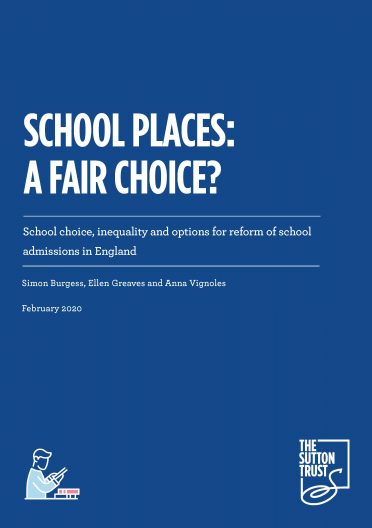Report Overview
For 15 years, the Sutton Trust has analysed the social make-up of high-performing comprehensives, finding that the number of disadvantaged pupils at these schools is around half that of the average, and often lower than the average living in the schools’ catchment areas. To inform its work in this area for 2020, the Trust is publishing two research reports:
- Fairer Schools Admissions – This research brief surveys teachers and parents for their views on school admissions and finds that there is a strong desire to reduce social segregation in state schools, but challenges remain for policy change. Authored by Carl Cullinane.
- School Places: A Fair Choice? – This report gives an overview of the problems with the current school admissions system and examines the benefits and disadvantages of different proposals for reform. Authored by Simon Burgess, Ellen Greaves and Anna Vignoles, the report looks at admissions strategies including random ballots, priority for disadvantaged students and banding tests.
This research comes alongside a consultation by the Sutton Trust to seek input from schools and other organisations on the best ways forward, and to help create concrete guidance to help schools make their admissions fairer.
